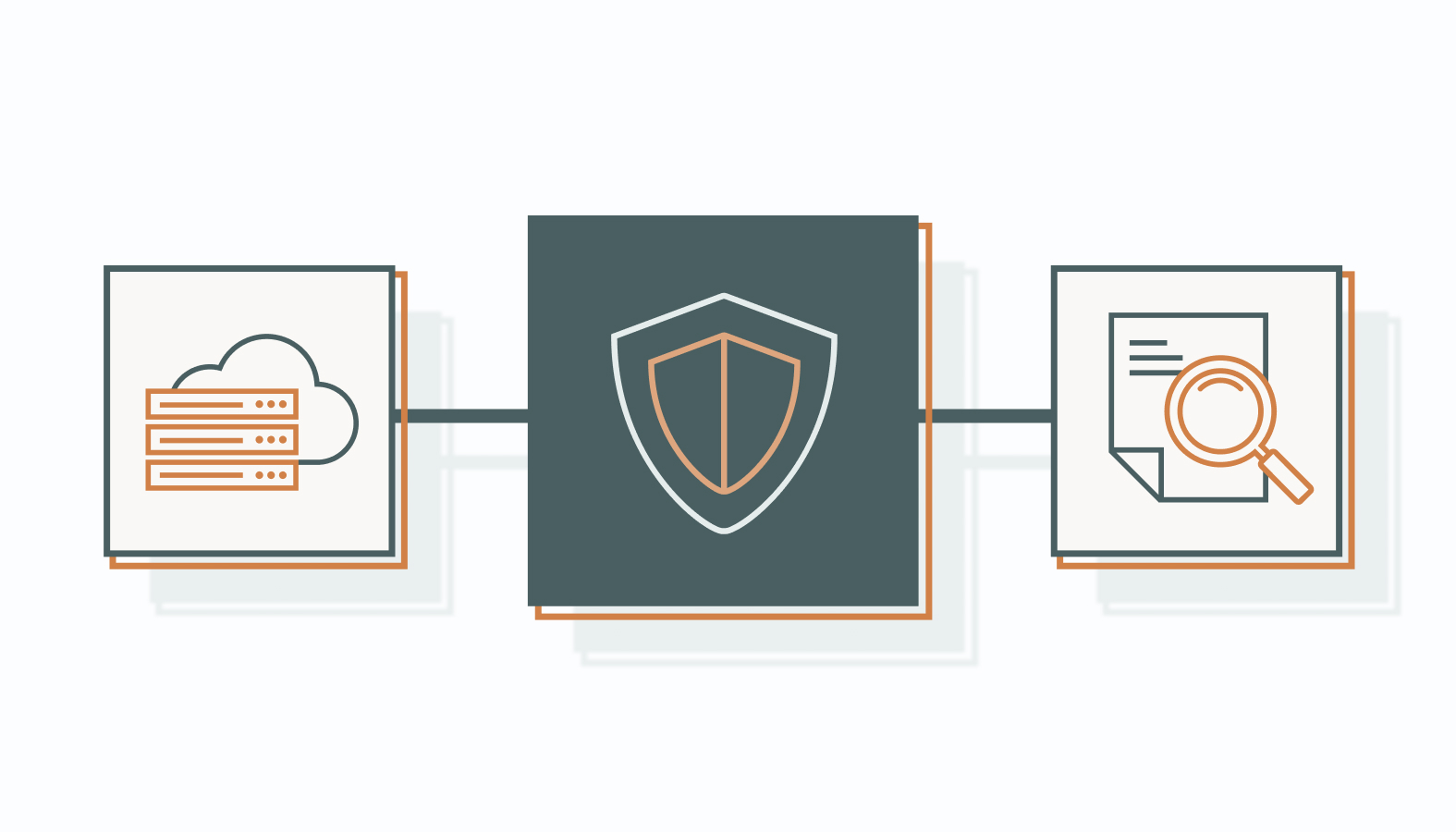Look, managing content isn’t some dusty back-office chore. It’s the very lifeblood of your brand, a strategic powerhouse capable of launching you into the stratosphere or burying you six feet under.
And yet, businesses everywhere are tangled in archaic systems, drowning in scattered workflows, and churning out content that lands with a dull thud.
The digital world doesn’t wait for anyone, and without a razor-sharp content strategy, even the most brilliant ideas vanish into the white noise.
A smarter approach? That’s where the magic happens. The right CMS, AI-powered insights, and a governance framework that actually works — these aren’t just buzzwords. They’re the keys to transforming your content from a constant headache into a scalable asset that drives real, tangible results.
So, how do we take back control? Let’s dissect the essential strategies, tools, and best practices that’ll have your content humming like a finely tuned engine.
How Content Management Can Help You
Think of today’s digital landscape as a bustling, high-stakes marketplace. To thrive, you need efficiency and quality, and that’s precisely what content management delivers. By mastering this, you streamline operations, elevate your digital content, and boost your bottom line.
What is Content Management?
Content management is the art and science of creating, storing, organizing, and publishing digital content with surgical precision. It’s about ensuring your content is not just produced, but produced efficiently, and that it’s accessible and relevant to your audience when they need it most.
Enter the Content Management System (CMS). These systems are your digital command centers, offering features like user access control, content indexing, and lightning-fast search functionality. They’re the backbone of smooth content operations and seamless team collaboration.
Comparing Content Management and Content Strategy
Now, don’t confuse content management with content strategy.
- Management is the nuts and bolts — the operational execution.
- Strategy, on the other hand, is the blueprint, the grand vision. It’s about planning what content to create, why, and how it’ll engage your audience.
Think of it like this: strategy sets the course, and management ensures the ship sails smoothly. They’re two sides of the same coin, working in tandem to achieve digital content success.
Different Types of Content Management Systems
Choosing the right CMS is like selecting the right core for your tech. It impacts everything.
You need a system that streamlines creation, fosters collaboration, enhances security, and integrates seamlessly with your existing tools. Let’s explore your options:
1) Web CMS
Web Content Management Systems (Web CMS) are your go-to for creating and managing website content. Consider these popular platforms:
- WordPress: Known for its user-friendly interface with a massive plugin ecosystem, WordPress powers a significant portion of the web. Its flexibility and ease of use make it a favorite among bloggers and small businesses.
- Joomla: Offers a balance between user-friendliness and advanced functionality, Joomla is ideal for users who need more flexibility than WordPress but without the complexity of Drupal.
- Drupal: Renowned for its robustness and scalability, Drupal is often used by large organizations and government websites. It requires a steeper learning curve but offers unparalleled customization and security features.
The benefits of using a Web CMS include simplified content creation, easy content management, and endless customization options to tailor the website to specific needs.
2) Document Management Systems
A Document Management System (DMS) is your digital vault, essential for managing, storing, and tracking documents. It helps reduce paperwork, ensures regulatory compliance, and improves workflow efficiency.
Key features of a DMS include:
- Version Control: Allows tracking of document changes and maintains a revision history to prevent data loss.
- Security Measures: Protect sensitive documents with encryption and access controls.
- Integration Capabilities: Seamlessly combines with other business tools like CRM or ERP systems to enhance productivity and collaboration.
3) Enterprise CMS
An Enterprise Content Management System (ECMS) is the comprehensive solution for larger organizations. It manages the organization’s entire content lifecycle, from creation and storage to distribution and archival.
ECMS Advantages include:
- Improved Data Compliance: Ensures adherence to data protection regulations and standards.
- Enhanced Collaboration: Streamlined content sharing and teamwork across different departments and geographic locations.
Typical use cases for an ECMS include large corporations, government agencies, and multinational enterprises that need powerful content management solutions. It’s also essential for organizations with complex workflows where security is a top priority.
When choosing a Web CMS, prioritize these features to meet business or individual needs:
- SEO Tools: Essential for optimizing web content to rank higher in search engine results.
- Responsive Design Support: Ensures that website content displays correctly on various devices, enhancing user experience.
- Multilingual Capabilities: Allows content to be presented in multiple languages to reach a broader audience.
In-depth Guide to Content Management Processes
In this digital age, your online presence is paramount, and content management plays a huge role in achieving this. Mastering these processes ensures your content aligns with your objectives, boosting visibility and engagement.
Content Management Lifecycle
The content management lifecycle is a comprehensive process that manages content from inception to its eventual archiving or deletion.
It begins with initial planning, where content objectives and strategies are set. This is followed by content creation, focused on producing engaging and relevant material.
Once created, content moves into the organization and storage phase, where it is cataloged for easy retrieval. Next, content enters the review and update stage, ensuring it remains accurate and relevant over time.
Finally, content is either archived for future reference or deleted if it no longer serves a purpose, completing the lifecycle.
Best Practices for Every Stage of Content Management
Achieving success in content management requires strategic, stage-specific best practices that are aligned with your broader goals. By applying the right approach at each step, you ensure your content drives results.
Stage 1: Planning Your Content Strategy
A successful content strategy starts with clear, measurable objectives.
Define your goals: whether it’s boosting brand awareness, generating leads, or enhancing customer retention.
Goals should be Specific, Measurable, Achievable, Relevant, and Time-bound (SMART). For example, if your goal is to increase brand awareness, you might aim to boost website traffic by 20% over the next six months. These objectives will shape your content strategy, ensuring that every piece of content contributes to achieving your business targets.
Assess your available resources, including existing tools, team capacity, and budget, to ensure your strategy is realistic and effective. This strategic foresight allows you to allocate resources wisely, ensuring your efforts stay focused and impactful.
Stage 2: Creating Engaging and Relevant Content
To create content that resonates, you must first understand your audience deeply.
Conduct thorough research to uncover their needs, preferences, and pain points.
Standing out in a crowded digital space requires originality and creativity so you must think fresh angles, compelling storytelling, and engaging formats that capture attention.
Your goal? Build a connection with your audience that feels authentic and lasting.
Stage 3: Organizing and Storing Content Efficiently
The right CMS is essential for keeping your content organized and easily accessible.
Select a CMS system that aligns with your content strategy, ensuring it provides the necessary features for efficient management.
A well-designed taxonomy is the backbone of effective organization. Categorize content logically to streamline retrieval and maintain structure across your content library.
Stage 4: Reviewing and Updating Content Regularly
Content isn’t static — it evolves over time. As such, you must:
- Schedule regular reviews to keep your content accurate and relevant.
- Conduct audits to identify outdated or inaccurate information, then streamline your update process with automation tools.
These tasks ensure your content remains fresh, aligned with current trends, and valuable to your audience.
Stage 5: Distributing Content Across the Right Channels
Distributing content effectively means understanding where your audience spends their time.
Identify the platforms they frequent: social media, email newsletters, or niche forums. Then, tailor your content to fit the unique preferences and behaviors of each channel.
Properly optimized content can exponentially increase engagement, ensuring your message hits the right audience, in the right place, at the right time.
Stage 6: Analyzing Content Performance and Feedback
To truly measure content success, you need the right metrics.
- Track engagement rates, conversion rates, and bounce rates to understand what’s working and where adjustments are needed.
- Listening to user feedback is equally crucial—it helps inform future content revisions and ensures you’re consistently evolving to meet your audience’s needs and expectations.
This continuous improvement loop keeps your content strategy agile and aligned with your goals.
Advanced Content Management Tools and Technologies
Businesses that implement advanced tools and new technologies in their content management simplify operations and gain a competitive edge.
Essential Tools for Effective Content Management
Beyond a Content Management System (CMS), several other tools can enhance your content management processes, boosting both efficiency and team collaboration. These tools simplify the complexities of managing content while fostering a more productive and seamless workflow.
Digital Asset Management (DAM) Software
Digital Asset Management (DAM) software handles digital assets such as images, videos, and other media files. It centralizes asset storage, making it easier for teams to organize, access, and manage files.
Key features of DAM software include:
- Metadata Management: Improves searchability and organization by tagging assets with relevant information.
- Version Control: Tracks changes made to assets, ensuring a clear history of revisions.
DAM software helps businesses maintain consistency in digital media usage, reduce errors, and save time in asset management. It ensures teams are always working with the most current, relevant content.
Collaboration and Workflow Tools
Effective teamwork is key to smooth content creation and management. Collaboration and workflow tools provide platforms for communication and task management, helping teams stay aligned and efficient.
Examples of powerful tools include:
- Trello: A visual project management tool that uses boards and cards to enhance transparency and keep teams on track.
- Slack: A real-time messaging platform that enables instant communication and file sharing, while integrating with other tools to centralize information.
These tools integrate seamlessly into content management strategies by aligning tasks, timelines, and resources, ensuring teams stay organized and cohesive throughout the process.
SEO and Analytics Platforms
SEO and analytics platforms are crucial for content success. These tools optimize content for search engines and provide valuable insights into how your content is performing. As a result, businesses get to make data-driven decisions.
Here’s how these platforms benefit content managers:
- Optimize Content: Leverage keywords and SEO best practices to enhance visibility and improve search engine rankings.
- Measure Performance: Track vital metrics like traffic, engagement, and conversion rates to assess content effectiveness and adjust strategies as needed.
These tools ensure that your content not only reaches the right audience but also resonates with them, ultimately driving business growth.
Emerging Technologies in Content Management
The content landscape is evolving fast, and emerging technologies are rewriting the rules. From AI-driven automation to blockchain security, these innovations are shaping the future of content management.
Artificial Intelligence and Machine Learning
AI and machine learning are revolutionizing content creation, analysis, and personalization. These technologies handle tedious tasks like tagging assets, optimizing metadata, and suggesting improvements based on user engagement.
The real magic is AI’s ability to tailor content experiences dynamically, delivering the right message to the right audience at the perfect moment.
Blockchain for Content Security
In a world where digital ownership is increasingly complex, blockchain offers a solution. This decentralized technology safeguards intellectual property, verifies authenticity, and tracks distribution with absolute transparency.
Think of it as a digital notary, ensuring content remains untampered and rightfully attributed, which is critical in an era of deepfakes and content piracy.
Augmented and Virtual Reality in Content Creation
Augmented Reality (AR) and Virtual Reality (VR) aren’t just for gaming. They’re reshaping how brands engage audiences, from interactive product demos to fully immersive training experiences.
Imagine letting customers “try before they buy” with AR overlays or transporting them into virtual spaces that bring stories to life. While adoption challenges remain — like production costs and accessibility — those who invest now are ahead of the curve.
Voice Search Optimization Tools
With smart speakers and voice assistants embedded in daily life, voice search is reshaping how content is discovered.
Optimizing for natural language queries means structuring content around conversational phrases, FAQs, and instant answers. The faster and more precise your content is, the higher it ranks in this voice-first world.
What’s Next? Adapt or Get Left Behind
These technologies aren’t coming—they’re here. Businesses that embrace AI, blockchain, immersive experiences, and voice search will lead the next wave of digital innovation. The question isn’t whether to adapt, but how fast you can move.
Safeguard Your Content: Governance and Security Essentials
Content security isn’t just about locking down access. It’s about ensuring integrity, compliance, and alignment with your business strategy.
Strong governance and security measures protect your content; build trust, streamline workflows, and keep your organization ahead of regulatory changes.
Here’s how to do it right.
Create Robust Content Governance Policies
A well-defined governance strategy ensures that every piece of content serves a purpose, meets quality standards, and follows industry regulations.
Without it, content chaos sets in, leading to inefficiencies, inconsistencies, and compliance risks.
Building Your Content Governance Framework
Start by outlining clear policies for how content is created, reviewed, published, and archived. This framework should align with business objectives, making sure content efforts drive measurable impact.
When governance is intentional, content workflows become more efficient, and teams operate with clarity.
Clarifying Roles and Responsibilities
Accountability is the backbone of content governance. Clearly defining who creates, reviews, and approves content prevents bottlenecks and keeps processes running smoothly.
When everyone knows their role, collaboration improves, and quality stays consistent.
Security Measures for Protecting Digital Content
Cyber threats are growing, and content security must keep pace. Protecting intellectual property, customer data, and proprietary materials must be a business priority.
Data Encryption: The First Line of Defense
Encryption ensures that sensitive data remains protected, whether at rest or in transit. Implement industry-standard protocols like AES encryption and multi-factor authentication to safeguard content and prevent unauthorized access.
Regularly updating encryption keys adds an extra layer of security.
Audits & Compliance: Staying Ahead of Risks
Routine audits help identify vulnerabilities before they become problems.
Review security protocols, assess workflow efficiency, and ensure compliance with industry regulations. Staying proactive keeps your content — and your reputation — secure.
Consider content governance and security as both technical necessities and strategic advantages. A strong foundation keeps your content organized, compliant, and protected, allowing your business to grow with confidence.
The question is: Are you setting the right safeguards in place?
Building a Strong Content Management Foundation
A well-structured content management process ensures your strategy stays adaptable, scalable, and aligned with business goals.
Rather than just focusing on execution, a strong foundation enables content to evolve with your audience’s needs and market shifts.
1) Defining Your Content Vision and Role in the Business
Before diving into content planning, define the bigger picture:
- What role does content play in your organization’s growth?
- How does it support marketing, sales, customer retention, or thought leadership?
- What key themes, values, and messages should remain consistent across all content?
This vision ensures content is not just a tactical output but a strategic asset.
2) Creating a Sustainable Content Framework
Many organizations struggle with content inconsistency due to shifting priorities or lack of governance. A sustainable framework includes:
- Governance Guidelines: Establish who oversees content strategy, approval processes, and compliance.
- Scalability Planning: Ensure your content approach can grow with your business without overwhelming your team.
- Knowledge Management: Maintain an accessible repository for internal and customer-facing content, avoiding duplication and wasted effort.
3) Leveraging Content as a Business Asset
Rather than viewing content as a one-off deliverable, successful organizations treat it as a business driver. This means:
- Structuring content to align with sales and customer journeys.
- Creating assets that can be repurposed across multiple channels instead of producing content in silos.
- Using data to identify gaps in messaging and customer education rather than just tracking engagement metrics.
4) Adapting to Market and Audience Shifts
A rigid content plan won’t hold up in today’s fast-changing digital landscape. Future-proof your content by:
- Monitoring industry trends and competitors to stay ahead of emerging topics.
- Maintaining flexible content pillars that allow for real-time adjustments without constantly overhauling strategy.
- Building an internal process for rapid content iteration, so updates can be made quickly based on performance insights.
5) Measuring Long-Term Content Impact
Beyond campaign-level analytics, foundational content management tracks:
- Content efficiency: How much time and effort are required to produce high-quality content?
- Revenue influence: How does content contribute to pipeline growth, customer retention, or brand authority?
- Strategic gaps: Where are you missing opportunities to address audience needs or expand reach?
By focusing on long-term performance, you ensure your content management system is not just effective today but built to evolve.
Unlocking Business Growth with Content Excellence
To drive business growth, effective content management is key.
Here’s how to unlock the full potential of your content strategy.
- A well-organized system aligns content with company goals, enhancing efficiency and impact.
- Choosing the right CMS platform—whether Web, Document Management, or Enterprise CMS—is crucial for scalability and workflow optimization.
- Streamlining every step of the content lifecycle ensures content remains relevant and valuable.
- Leveraging advanced technologies like AI, blockchain, and analytics boosts efficiency and security while fostering innovation.
- Strong governance and security policies protect intellectual property and build trust with stakeholders.
- Continuously tracking performance and refining strategies ensures ongoing success.
Ultimately, content excellence is about leveraging your content to strategically support long-term business growth.
Let’s Elevate Your Content Strategy
A strong content management strategy can transform your business—but execution is everything. If you’re ready to take the next step, we’re here to help.
Our team of experts is available to discuss your unique challenges and share tailored insights on optimizing your content strategy. No pressure, just fresh perspectives and actionable solutions.
Let’s talk; schedule a candid conversation today.














